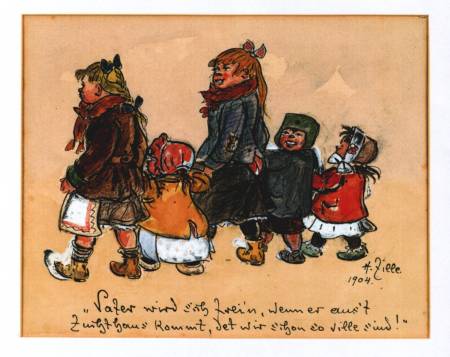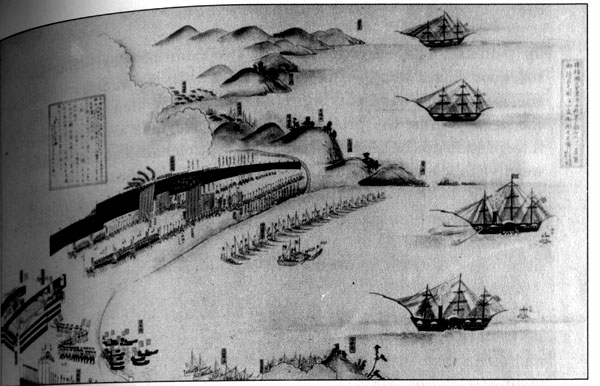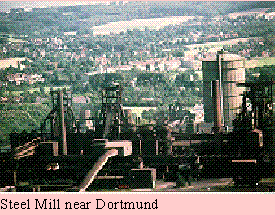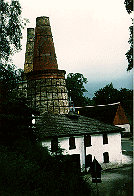|
John C. Brown Dept. of Economics Clark University Worcester, MA 01610-1477
|
|
Office JC226 Telephone: 508 793 7390 Fax: 508 793 8849 |
Research
.My research interests in economic history include the history of international trade in the context of Japan's opening up, historical demography, urbanization, and the history of the German cotton textile industry. Unpublished research papers are available simply by e-mailing me.
Decline in Urban Fertility, Munich 1850-1910
Supported by a
grant from the N ational Institute of Child Health and Development, the
project examines the explanations for the rapid decline in fertility that
began during the 1880s in most of Germany and has continued through the
modern period. The project draws upon archival and contemporary published
sources to provide a background to the decline and it develops a detailed
microeconomic analysis of fertility decline using a sample of over 5,000
couples. The data are from
police registration records (Polizeimeldebögen)
found in the Munich City Archive. My collaborator in this project
is Timothy Guinnane.
ational Institute of Child Health and Development, the
project examines the explanations for the rapid decline in fertility that
began during the 1880s in most of Germany and has continued through the
modern period. The project draws upon archival and contemporary published
sources to provide a background to the decline and it develops a detailed
microeconomic analysis of fertility decline using a sample of over 5,000
couples. The data are from
police registration records (Polizeimeldebögen)
found in the Munich City Archive. My collaborator in this project
is Timothy Guinnane.
- "The Munich Polizeimeldebögen as a Source for Quantitative History". Historical Methods 26 (Summer, 1993). (With Timothy Guinnane and Marion Lupprian)
- "The Fertility Transition in Bavaria" (with T. Guinnane) Population Studies 56 (March, 2002)
Japan's Opening Up and the Basic Theories of International Trade.
| Japan ended almost two centuries of near autarky on July 4, 1859 when the ports of Kanagawa, Hakodate and Nagasaki were opened up to international trade. Until that time, most trade with the Chinese and Dutch was carried on out of small trading posts in the port of Nagasaki. That trade was subject to rigorous limitations (one Dutch ship could visit each year) and was inconsequential. After opening up, Japan's volume of trade expanded rapidly. This project uses this unique experiment of a an economy emerging from autarky into an open trade regime to examine key propositions of neo-classical trade theory, including the theory of comparative advantage and the comparative advantage gains from trade. Funding from the National Science Foundation is supporting an investigation of two additional propositions inspired by the neo-classical trade model: the Heckscher-Olin Theorem and the Stolper-Samuelson Theorem. |
 |
My collaborator in this project is Daniel Bernhofen.
Publications include
“An Empirical Assessment of the Gains from Trade: Evidence from Japan” (with
Daniel Bernhofen), American Economic Review 95 (1) (March, 2005), pp.
208-225.
“A Direct Test of the Theory of Comparative Advantage: The Case of Japan” (with
Daniel Bernhofen), Journal of Political Economy 112(1, part 1) (February,
2004), pp. 48-67.
| Markets and Mortality: Public Health and the Decline in Urban Mortality,
Germany from 1860 through 1910.
This project investigates the rapid reduction in urban mortality that began in German cities during the 1870s. By the turn of the century, many German cities had acquired the reputation for effectively addressing the major adverse impacts of rapid urban growth on public health. The project first examines the causes of mortality decline using a detailed, city-level data set from middle- and large-sized German cities from the period 1888 through 1912, the causes of infant mortality decline, and an evaluation of the effectiveness of the main public health measures of the period that intervened most dramatically in the market for housing. The analysis includes use of samples from the Basel housing census of 1889 and the Munich housing census of 1904-1907 and other data on housing residents. Finally, the project examines the potential for other ameliorative measures, particularly de-centralization, to cut the link between housing and health. |
 |
Papers that are part of this project include:
"Coping with Crisis? The Diffusion of Waterworks in Late Nineteenth-Century German Towns," Journal of Economic History 48 (June 1988), pp. 307-318.
"Public Reform for Private Gain? The Case of Investments in Sanitary Infrastructure: Germany, 1880-1887," Urban Studies 26 (1989), pp. 2-12.
"Reforming the Urban Environment: Sanitation, Housing, and Government Intervention in Germany, 1870-1910," Journal of Economic History 49 (June, 1989), pp. 450-452.
"The Condition of England and the Standard of Living: The Case of Cotton Textiles, 1806-1850," Journal of Economic History50 (September, 1990), pp. 591-614.
"Variations in Mortality in a Network of Cities: The Case of the Sanitation Revolution in Germany, 1888-1912"
“Wer bezahlte die hygienische Stadt? Finanzielle Aspekte der sanitären Reformen in England, USA, und Deutschland um 1910" [Who Paid for the Sanitary City? Issues and Evidence Ca. 1910] in Alfons Labisch and Jörg Vögele, eds.,2000."
"Infant Mortality Decline in German Towns, 1891-1912: Economics and Issues for Statistical Analysis with Some Preliminary Results” in Sally Sheard and Helen Powell, eds., The Body and the City, University of Liverpool Press, 2000.
“Income, Sanitation, Sharing, and the Weather: Infant Mortality in Turn of the
Century Munich”
 Cotton Textiles
and German Industrialization: 1850-1914. This project examines the
influence of the German cotton textile industry on the course of German
industrialization. Most of the historical literature on German industrialization
focuses on the role of heavy industry, whether the coal mines featured
on the home page, steel, or industrial chemicals. This is in marked contrast
with England, where the development of the cotton textile industry in Lancashire
forms a focus of traditional accounts. This project develops an economic
history of the German cotton textile industry. The research thus far has
included an explanation for the absence of specialization by process so
common to the English industry and a closer look at the the sources of
export success in turn of the century cotton textile markets. Further research
is exploring pattern of productivity growth in the industry and the role
of the labor force in the development of productivity. Papers include
Cotton Textiles
and German Industrialization: 1850-1914. This project examines the
influence of the German cotton textile industry on the course of German
industrialization. Most of the historical literature on German industrialization
focuses on the role of heavy industry, whether the coal mines featured
on the home page, steel, or industrial chemicals. This is in marked contrast
with England, where the development of the cotton textile industry in Lancashire
forms a focus of traditional accounts. This project develops an economic
history of the German cotton textile industry. The research thus far has
included an explanation for the absence of specialization by process so
common to the English industry and a closer look at the the sources of
export success in turn of the century cotton textile markets. Further research
is exploring pattern of productivity growth in the industry and the role
of the labor force in the development of productivity. Papers include
"Market Organization, Protection, and Vertical Integration: German Cotton Textiles before 1914," Journal of Economic History 52 (June, 1992), pp. 339-351.
"Imperfect Competition and Anglo-German Trade Rivalry: Markets for Cotton Textiles before 1914," Journal of Economic History. 55 (September, 1995), pp. 494-527.
"Productivity Growth and Protection in German Cotton Textiles: 1850-1913"
|
German Labor Markets During Industrialization. This project is
conducted jointly with Dr. Gerhard Neumeier. The project draws on employment records from firms and from
the Munich health insurance funds to examine tenure on the job and other
issues related to the development of German labor markets. The data set from
employment records includes the tenure, age, and place of
origin for thousands of workers in the textile and
metal-working industries.
Papers resulting from this collaboration include “Job Tenure and Labor Market Dynamics during High Industrialization: The Case of Germany before World War I” (with Gerhard Neumeier). European Review of Economic History.5(August, 2001), pp. 189-217. |
 |

“Working Class Careers: On-the-Job Experience and Career Formation in Munich, 1895-1910" (with Gerhard Neumeier) in John C. Brown, David Mitch, and Marco Van Leeuwen, eds., Origins of the Modern Career: Career Paths and Job Stability in Europe and North America, 1850-1950, Ashgate Press (Aldershot, Hants, England, 2004), pp. 259-278.
Last Updated May, 2005 by John Brown